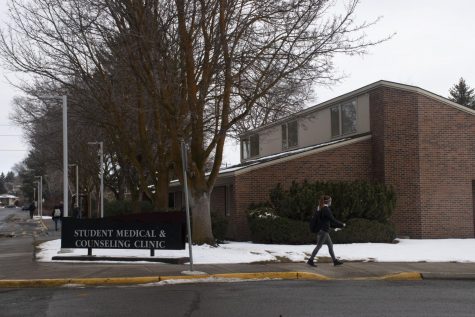How to access the SMaCC
February 5, 2020
Students are seeking out mental health services more now than ever before, with 69% of students reporting a perceived need for counseling services from 2016 to 2017, according to CWU’s The Healthy Minds Study. Several avenues for obtaining these services are available on campus, though with only 20% reporting receiving counseling in that same year, students may not fully know what resources are available to them.
The foremost of these resources is the Student Medical and Counseling Clinic (SMaCC). There are two different categories for processing appointments in the Counseling Center. The first is access, which is when a student originally reaches out to the clinic. In fall quarter, the wait time for access appointments was 3.76 business days from the time somebody reached out to the time they were seen for a consultation appointment. If they reached out for a crisis appointment, the response time was less than a day.
“I have … worked to really decrease wait time for access,” Director of Counseling Dr. Cindy Bruns said. “I think it’s really important that when somebody gets brave enough to make that first call, whatever that first type of appointment is that they need from us… that people not have to wait for that.”
The second category of appointments is treatment, which are made for students who have already accessed the clinic and are now making ongoing appointments. This is where students may begin to feel stuck, as treatment appointments over time form a waitlist. However, according to Bruns, that waitlist is not strictly in order of request once established. It can be assigned degrees of urgency by factors like suicide risk, risk of self injury or risk of academic failure. Additionally, it does not persist from quarter to quarter.
“At the end of every quarter, rather than continuing a waitlist, that waitlist goes away,” Bruns said. “So we try to give the folks who were waiting, and we weren’t able to match, kind of the same shot at open appointments as we do anybody else.”

One of the reasons treatment appointments are prone to waitlisting is due to the types of services students are seeking. More traditional individual appointments are one of the most sought after services at the counseling clinic, even though other services, such as group therapy, skills workshops and drop-in sessions around campus are available. When students are put on an individual therapy waitlist, at least 30% are offered another service in addition to being waitlisted, according to Bruns.
“Then it’s up to the student about whether or not they’re willing to accept that additional service. Sometimes students are very set on a modality of treatment either based on past experience or other kinds of considerations,” Bruns said. “We do offer them a variety of other types of ways to meet their needs, rather than just assigning them to waitlists.”
Similar situations are being seen at various service centers that can provide students with mental health support around campus, such as the Wellness Center.
“We’ve seen an increase in the number of students who want to take advantage of [one-on-one coaching] specifically for mental health reasons,” Director of Health Promotion and Wellness Marissa Howat said.
The health coaching provided by the Wellness Center takes the form of personalised, individual sessions. These are appropriate for someone who wants to improve their mental health or wellbeing but may not meet the criteria to be consistent with ongoing therapeutic intervention services, according to Howat.
Each fiscal year, the counseling side of the SMaCC sees approximately a 2% growth in the amount of students they see, according to Bruns. This year, should that rate continue, they expect to see about 12% of the entire student population.
Both Bruns and Howat said their departments were understaffed and lacked adequate space for the level of demand they receive, expressing a desire to see their services moved to a larger space more specialized for the kinds of work they do.
Brun has one dream in particular for these resources.
“A coordinated student services space or health and wellness space where we could all be together and collaborate more closely,” Bruns said.

